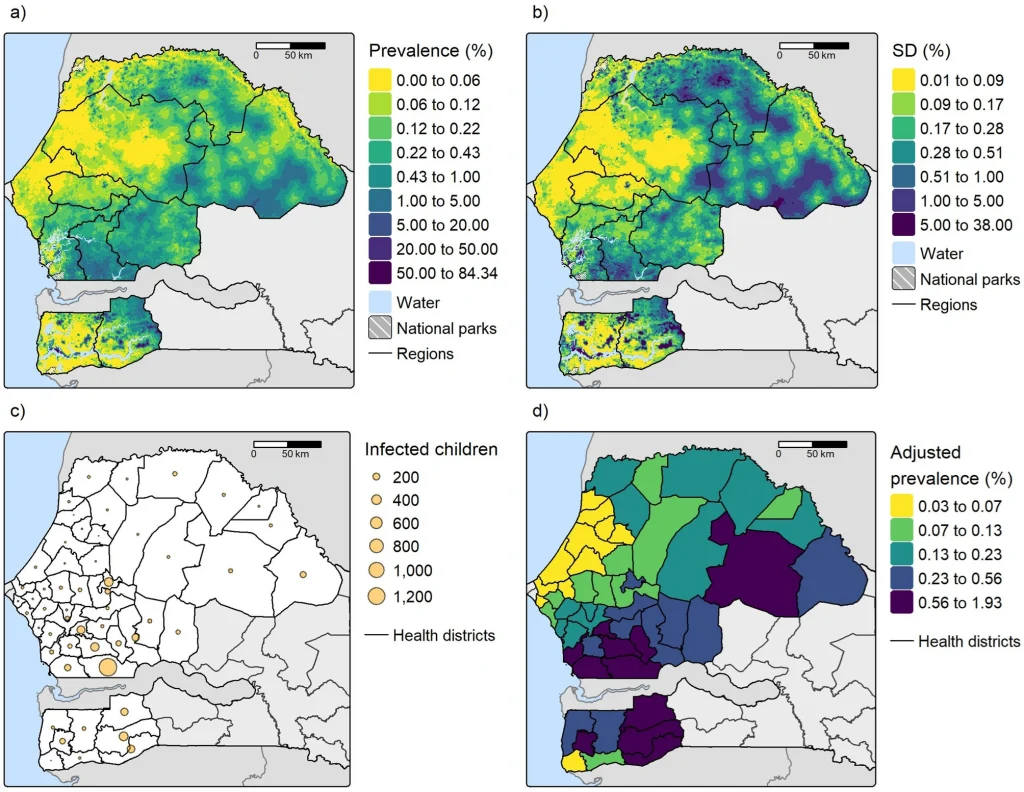Senegal is pushing to eliminate malaria by 2030, and a new study could help target the fight more precisely.
Researchers at the University of Namur, Belgium, the University of Ghana and WorldPop at the University of Southampton have developed a powerful new way to map malaria risk across the country by integrating both environmental “hazards” (like rainfall and mosquito presence) and population “vulnerability” (such as access to healthcare and quality of housing). The study, led by Camille Morlighem at the University of Namur is published in BMC Infectious Diseases, a peer-reviewed journal. Drawing upon WorldPop gridded population datasets, the researchers use advanced Bayesian geostatistical models to produce high-resolution maps that predict malaria prevalence in children under five at the 1-kilometer level.
By combining national survey data from 2017 with regional data from 2020–21, the team found that incorporating vulnerability factors (such as anaemia rates, bed net ownership, and walking time to clinics), significantly improved the accuracy of malaria risk predictions. In fact, these factors alone outperformed models that only considered environmental hazards.
The resulting maps reveal a clear trend: malaria risk increases from northwest to southeast Senegal, with surprising hotspots even in urban centres like Dakar and Touba. In the high-transmission Kolda-Kédougou-Tambacounda (KKT) region, however, dry-season data led to weaker predictions, highlighting the need for better seasonal data.
This integrated approach could be a game-changer for public health officials, helping to direct resources and interventions to the areas most in need. Researchers now aim to refine the models using routine health system data and seasonal environmental information to further sharpen the fight against malaria.
Learn more
Integrating vulnerability and hazard in malaria risk mapping: the elimination context of Senegal (BMC Infectious Diseases)
Register for The Power of Population Data: Introducing WorldPop Global 2015–2030 (Eventbrite)




